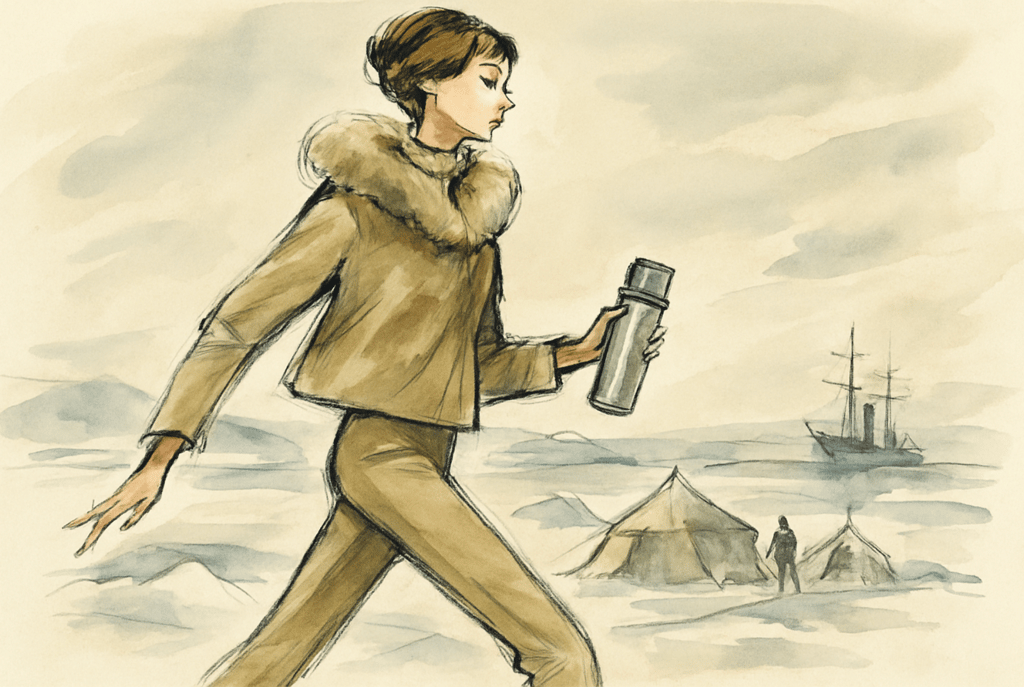How the Humble Thermos Changed Expeditions: Scott, Shackleton, and Survival in the Cold
How did a Thermos help Shackleton and Scott survive the Antarctic? Discover how the vacuum flask revolutionised polar exploration and became a tool of survival.
FOOD HISTORY & TRADITIONS


When we picture the great polar explorers of the early 20th century—Robert Falcon Scott trudging across the Antarctic plateau, Ernest Shackleton rallying his stranded crew on the Endurance—we think of sledges, snow, and sheer grit. But among the furs, tents, and dog harnesses was a quieter piece of equipment that helped keep them alive: the Thermos flask.
Invented just before the Heroic Age of Antarctic Exploration, the Thermos was a marvel of modern science. Its vacuum-sealed design allowed liquids to stay hot for hours, even in sub-zero conditions where a boiling pot of tea could freeze solid in minutes. For Scott, Shackleton, and countless others, these flasks weren’t luxuries. They were lifelines.
The Invention That Made Heat Portable
The Thermos owes its existence to Sir James Dewar, a Scottish chemist who, in 1892, invented the vacuum flask while researching cryogenics. Dewar was trying to keep liquids cold, but his design—two glass walls with a vacuum between them—worked just as effectively at keeping heat in.
In 1904, the invention was commercialised by the German company Thermos GmbH, which turned Dewar’s laboratory tool into a portable, durable container for everyday use. By the time Shackleton launched his first Antarctic expedition in 1907, Thermos flasks were available to the public and quickly became coveted by explorers and mountaineers.
For men heading into environments where temperatures plunged to -40°C, the ability to carry heat—in the form of tea, broth, or porridge—was revolutionary. Fires were often impossible in the treeless Antarctic, and food cooled so quickly in the open air that eating could feel like chewing frozen rations. A Thermos of hot liquid was warmth, hydration, and morale, all in one.
On the Ice: Scott, Shackleton, and the Thermos
Both Scott and Shackleton relied heavily on Thermos flasks during their Antarctic journeys. Diaries and expedition records describe how flasks of hot tea or broth became a daily ritual, thawing frozen hands and lifting spirits after brutal marches across the ice.
For Scott’s doomed Terra Nova Expedition (1910–1913), Thermoses carried precious calories and comfort as the team pushed toward the South Pole. Though their fate was sealed by a combination of weather, exhaustion, and misfortune, the flasks were among the few tools that consistently offered relief on the journey.
Shackleton’s Imperial Trans-Antarctic Expedition (1914–1917) leaned on them even more. When the Endurance became trapped and eventually crushed by pack ice, the crew rationed every resource, including what warmth they could manage. Their Thermoses, filled with tea or broth, became touchstones of routine and morale. A shared sip was more than hydration—it was a reminder of civilisation, a fleeting moment of normalcy as they drifted for months across the frozen Weddell Sea.
The Thermos as Technology of Survival
What made the Thermos so transformative wasn’t just comfort; it was survival. In the polar regions, where windchill can drop effective temperatures to -60°C, hypothermia can set in within minutes. A supply of hot liquid helped explorers keep their core temperatures stable during rest stops, reducing the risk of cold-related illness and giving their bodies fuel to burn as they slogged on.
The Thermos also conserved energy. Without it, crews had to melt snow and reheat food at every stop, tasks that burned fuel (scarce on long journeys) and precious time. By carrying ready-to-drink liquids, explorers could keep moving with fewer delays and less exposure to the elements.
In a sense, the Thermos represented a shift in exploration technology: not as flashy as sledges or ice axes, but just as crucial in tipping the balance between endurance and collapse.
Fun Fact: The Ritual of Warmth on the Endurance
Shackleton’s men developed a ritual around their Thermoses. Even as supplies dwindled, they preserved small daily servings of tea or broth, sipping together in the flickering light of their makeshift shelters. These moments, chronicled in diaries, weren’t just about nourishment—they were morale anchors, helping keep the crew unified and sane during their long, uncertain drift across the ice.
From Lifesaver to Everyday Item
Today, we casually carry coffee in sleek, stainless-steel flasks on our commutes. The Thermos has become so ordinary that it’s easy to forget how revolutionary it was in the early 1900s. For Scott, Shackleton, and their crews, it was more than a convenience. It was a portable hearth, a tiny piece of warmth in the coldest corners of the Earth.
The Thermos also symbolised a turning point in exploration. Alongside innovations like lightweight stoves, insulated clothing, and mechanised sledges, it marked the moment when scientific progress began to soften, however slightly, the brutal realities of pushing into the planet’s extremes.
The next time you take a sip from your insulated flask on a frosty morning, think of Shackleton’s crew huddled on Antarctic ice, passing around their Thermos of tea. A simple invention, yes—but one that, for a generation of explorers, helped tip the scales between life and death.
